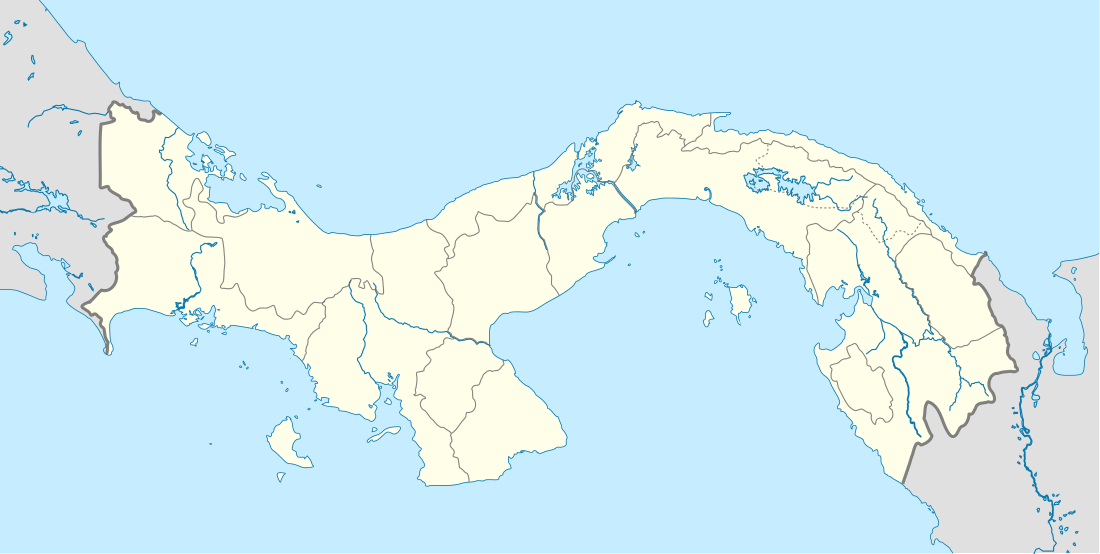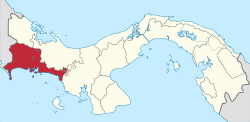Volcán, Panama
| Volcán | |
|---|---|
| Town and corregimiento | |
 Volcán | |
| Coordinates: 8°46′44.3″N 82°38′39.3″W / 8.778972°N 82.644250°WCoordinates: 8°46′44.3″N 82°38′39.3″W / 8.778972°N 82.644250°W | |
| Country |
|
| Province | Chiriquí |
| District | Tierras Altas |
| Area[1] | |
| • Land | 233.7 km2 (90.2 sq mi) |
| Population (2010)[1] | |
| • Total | 12,717 |
| • Density | 54.4/km2 (141/sq mi) |
| Population density calculated based on land area. | |
| Time zone | EST (UTC−5) |
Volcán is a town and corregimiento in Tierras Altas District, Chiriquí Province, Panama.[2][3] It has a land area of 233.7 square kilometres (90.2 sq mi) and had a population of 12,717 as of 2010, giving it a population density of 54.4 inhabitants per square kilometre (141/sq mi).[1] Its population as of 1990 was 7,146; its population as of 2000 was 10,188.[1]
Volcan sits on an old lava flow from Volcan Baru, the highest point in Panama at 3,475 metres (11,460 feet). The low range of mountains to the south of Volcan were once part of Volcan Baru blown/slid several kilometers to their current location by a violent eruption of the volcano.[4]
Volcan is the Heart of the Bread Basket of Panama. Major roads out of Volcan go to the farming communities of Cerro Punta, Plaza de Caisan, La Concepcion, Rio Sereno on the border with Costa Rica and the soon to be completed road to Boquete. Crops in and around Volcan include onions, cabbage, carrots, coffee, bananas, potatoes, lettuce, corn, tomatoes, cauliflower, broccoli and cut flowers. Large dairy, horse and cattle farms with many smaller sheep, pigs and chicken farms are along the roads into Volcan. A few kilometres north of Volcan on the road to Cerro Punta is a large trout farm. The farming community is supported by a large Catholic High School, San Benito, dedicated to the improvement of farming methods in Panama.
Volcan is 1,400 meters (4,617 feet) above sea level and at 8.5 degrees North; the weather is Springlike the year around with afternoon highs of upper 70s and night time lows to the lower 60s. It has two seasons, wet and dry. Starting around December 15, the dry season lasts for about four months.
References
- 1 2 3 4 "Cuadro 11 (Superficie, población y densidad de población en la República...)" [Table 11 (Area, population, and population density in the Republic...)] (.xls). In "Resultados Finales Básicos" [Basic Final Results] (in Spanish). National Institute of Statistics and Census of Panama. Retrieved May 26, 2015.
- ↑ Ley 55 del 13 de septiembre del 2013.
- ↑ "Tierras Altas, nuevo municipio chiricano". La Prensa. September 17, 2013. Retrieved May 29, 2015.
- ↑ http://pubs.usgs.gov/of/2007/1401/
